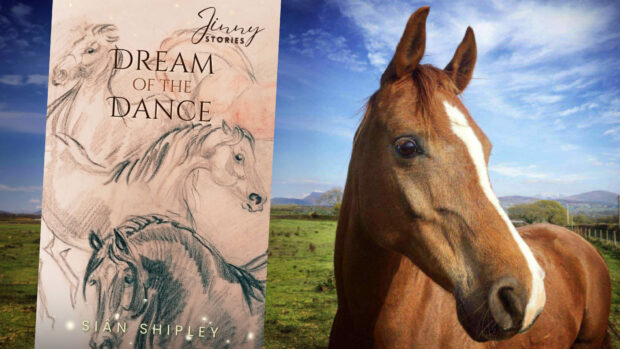In the latest edition of the German Equestrian Federation’s The Principles of Riding: Basic Training for Horse and Rider, a clear definition is given of what is really mean by ‘classical riding’
Today, as in the past, the ideas expressed in Principles of Riding are based on the principles of classical riding.
‘Classical riding’ can be defined as: “a vital and modern training system which builds on the basic principles of the ‘Old Masters’, supplemented by new insights which serve the welfare of the horse and are purposeful for its training.”
Classical riding has developed over the centuries, with the contribution of many significant historical riding masters. What did not become established was discarded. Established knowledge was recognised, passed on and developed further.
That is, regardless of the different uses of the horse, how the following essential and eternally valid criteria of classical riding according to the Principles of Riding of the German Equestrian Federation (FN) have evolved.
Classical riding:
- Is orientated towards the nature of the horse – that is, the horse’s needs and each horse’s natural, individual abilities.
- Considers:
– the physical precondition of the horse
– and the natural behaviour of the horse. - When done correctly is species-appropriate and supports the horse’s welfare.
- Is aimed towards a balanced ‘gymnasticising’ and strengthening of the horse.
- Is focused on the training of each individual horse, and is thus diverse and versatile.
- Develops and maintains a horse that performs willingly and confidently.
- Demands from the rider an elastic, balanced seat, a sensitive, fine use of the aids, as well as an understanding of the nature of the horse and its correlation to training, and thus leads to inner and outer balance of horse and rider.
The overall structure and content of the Principles of Riding is focused on this fundamental understanding. The training scale (sometimes also referred to, in Germany and elsewhere, as the scale(s) of training) contains the following six elements:
Rhythm — regularity of all steps or strides.
Suppleness — supple contraction and relaxation of the muscles through inner relaxation.
Contact — constant, soft connection between the rider’s hand and the horse’s mouth.
Impulsion — transmission of the energetic impulse from the hindquarters over the swinging back into the overall forward movement of the horse.
Straightness — even gymnasticising of both sides of the horse’s body to compensate for the horse’s natural crookedness.
Collection — light-footed balance covering less ground with energetic hind legs that are brought under the body in self-carriage.

This structure is defined as the centrepiece of classical riding because it gives a guideline not only for the long-term training programme of the horse, but also for every individual schooling session, regardless of the intended use of the horse.The six steps simultaneously influence each other.
They lead to the horse developing an ever-improving throughness (throughness describing the condition of the horse when it fulfils all of the elements of the Training Scale at its respective level of training and responds willingly to the interplay of the rider’s aids), as well as an increasingly assured balance when combined with the education and submission of the horse.
A correctly shaped horse (one with basic physical attributes that are enhanced and developed to the optimum by the application of classical principles) emerges as a result of training. Each rider should not only know these classic principles, but also consider self-critically, how they can be put into practice.
Those who deal with horses must recognise the horse’s basic needs, respect them and assume responsibility for them. This should henceforth lead to efforts towards horse maintenance and management that respect the nature of the horse, to competent, sensitive care, as well as to riding with plenty of ‘feel’.
As with people, strengths and weaknesses form part of the individual characteristics of every horse. Supporting the horse’s strengths as well as recognising its weaknesses and then minimising them is the practical aim that requires the rider to have knowledge, skill, experience, understanding and patience.
Continued below…

Michael Eilberg’s top training tips for hot horses
Michael Eilberg offers expert advice on the riding techniques that work best when riding and training a 'hot' horse

10 training tips that top riders swear by
The horse is gymnasticised through the training scale as a holistic method. This way, horse and rider will find a mutual balance, which enables them to communicate with each other, very delicately. Ideally, the movements of the horse and rider merge into one. The observer – whether non-professional or expert – will only perceive a harmonious overall picture.
Education and training according to classical riding creates a willing, cooperative horse, regardless of intended use, as long as these methods are employed correctly. Thus, riding will lead to pleasure, while at the same time ensuring the horse’s health.
A balanced, independent seat is the basis for this training. Riding different, well trained schoolmasters is an essential part of the rider’s learning process as they need to adjust to riding any horse with different physical conformation, movements, and their own individual character traits. This gives the rider a greater understanding of the horse, both physically and mentally, and helps develop riding skills and, more importantly, ‘feel’. The horse is always the ‘mirror’ of the rider’s influence.
Reasons for any difficulties, setbacks or lack of success must always be searched for initially within riders themselves and not with the horse. If the rider is heading in the right direction, this will be evident to them through the behaviour and the good feeling the horse radiates when under saddle.
This willingness for self-criticism, combined with the ability to put the above fundamentals into practice, are what leads to riding correctly according to the principles of classical riding.
The Principles of Riding is published by Kenilworth Press
Price: £19.95
BUY NOW via Amazon.co.uk £19.95
More info, visit: quillerpublishing.com
For all the latest equestrian news and reports, don’t miss Horse & Hound magazine, out every Thursday



